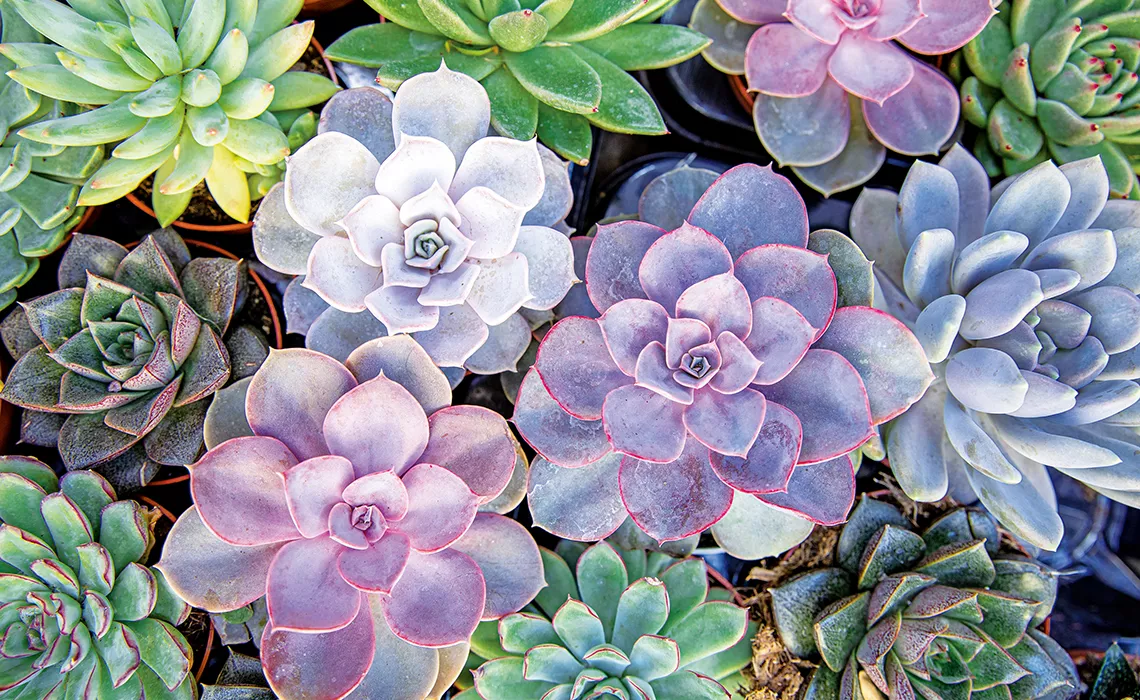Succulents, with their diverse forms and captivating structures, often exhibit growth patterns that may result in tall and leggy appearances. While these characteristics can be charming, tall succulents may require repotting to ensure their continued health and aesthetic appeal. In this comprehensive guide, we will explore the reasons behind succulents becoming too tall, the challenges it poses, and step-by-step instructions on how to repot a tall succulent to encourage a more balanced and visually pleasing growth.
Understanding Tall Succulents: Causes and Consequences
Tall succulents are often a result of insufficient sunlight or inadequate growing conditions. When succulents do not receive enough light, they stretch or elongate to seek sunlight, leading to a leggy appearance. Additionally, overcrowded pots, poor soil drainage, or imbalanced watering can contribute to succulents becoming too tall. While this growth pattern is a survival mechanism, it can impact the overall stability and aesthetics of the succulent. Recognizing the causes is the first step in addressing and rectifying the issue.
Assessing the Health of the Tall Succulent: Signs of Stress
Before embarking on the repotting process, assess the overall health of the tall succulent. Look for signs of stress such as yellowing leaves, wilting, or indications of pest infestation. These symptoms may be exacerbated in tall succulents, as the elongated stems may struggle to support the plant’s nutrient needs. Addressing any underlying health issues before repotting ensures that the succulent is in optimal condition for the transition.
Choosing the Right Time for Repotting: Seasonal Considerations
Timing is crucial when repotting tall succulents. The ideal time for repotting is during the growing season, typically in spring or early summer. During this period, succulents are actively growing, and the availability of sunlight encourages faster root establishment. Avoid repotting during the dormant winter months, as succulents are less resilient to stress and root disturbance during this period. Choosing the right time enhances the succulent’s chances of adapting successfully to its new environment.
Selecting a Suitable Pot: Providing Stability
Tall succulents often require a more stable and appropriately sized pot to support their height. Choose a pot that provides ample room for the roots to spread while offering stability to the succulent. It’s essential to select a pot with drainage holes to prevent waterlogged soil, as excess moisture can contribute to various issues, including root rot. The material of the pot, whether terracotta, ceramic, or plastic, can impact moisture retention, so choose based on the specific needs of your succulent.
See also: How to plant succulent in pot without drainage?
Preparing the New Pot and Soil: Creating an Optimal Environment
Before repotting, prepare the new pot and soil to create an optimal environment for the tall succulent. Fill the pot with well-draining succulent soil, leaving enough space for the roots to spread comfortably. The well-draining soil mixture is crucial for preventing waterlogged conditions and ensuring the succulent receives the right balance of moisture and aeration. Create a small indentation in the center of the soil to accommodate the roots of the tall succulent.
Gently Removing the Succulent: Minimizing Stress
Carefully remove the tall succulent from its current pot, taking care not to damage the roots or stems. Gently loosen the soil around the root ball, and if the succulent is root-bound, untangle the roots to encourage healthier growth. The goal is to minimize stress on the succulent during the transition, as tall succulents may be more susceptible to breakage or damage due to their elongated stems.
Inspecting and Trimming: Addressing Leggy Growth
As you inspect the tall succulent, pay attention to any excessively long or leggy growth. Leggy stems can be pruned to encourage a more compact and balanced appearance. Use clean, sharp scissors or pruning shears to trim the stems, focusing on areas where the succulent has become overly elongated. Be strategic in your trimming to maintain the overall symmetry of the succulent while addressing the leggy growth.
Planting in the New Pot: Ensuring Stability
Position the tall succulent in the center of the new pot, ensuring that the roots are spread evenly in the soil. Adjust the soil level as needed to provide stability to the succulent, avoiding any tilting or leaning. Gently press the soil around the base of the succulent to secure it in place. Ensure that the succulent is planted at the same depth as it was in the previous pot to maintain proper root coverage.
Watering and Initial Care: Gradual Reintroduction
After repotting, water the tall succulent lightly, allowing the soil to become moist but not saturated. Overwatering is a common issue that can lead to root rot, so exercise restraint in the initial watering. Gradually reintroduce the succulent to its growing environment by placing it in indirect sunlight. Avoid exposing it to intense sunlight immediately, as the succulent may be more sensitive during the post-repotting period. Monitor soil moisture and adjust watering based on the specific needs of the succulent.
Observation and Adjustments: Fine-Tuning Growth
Repotting tall succulents is a dynamic process that may require ongoing observation and adjustments. Monitor the succulent for signs of stress or imbalance, and make further adjustments as needed. Additional pruning may be required over time to maintain the desired shape and prevent the recurrence of leggy growth. By staying attentive to the succulent’s needs and making informed adjustments, you can guide it toward a healthier and more visually appealing growth pattern.
Conclusion
Repotting tall succulents is a strategic and rewarding endeavor that allows you to rejuvenate the plant, address leggy growth, and promote a more balanced appearance. Understanding the underlying causes of tall succulents and following the step-by-step guide outlined in this article empowers you to navigate the repotting process with confidence. From assessing the health of the succulent to choosing the right pot and soil, each step contributes to the overall success of repotting tall succulents. As you embark on this journey, relish the opportunity to enhance the vitality and aesthetics of your tall succulent, ensuring it continues to be a captivating centerpiece in your plant collection.


